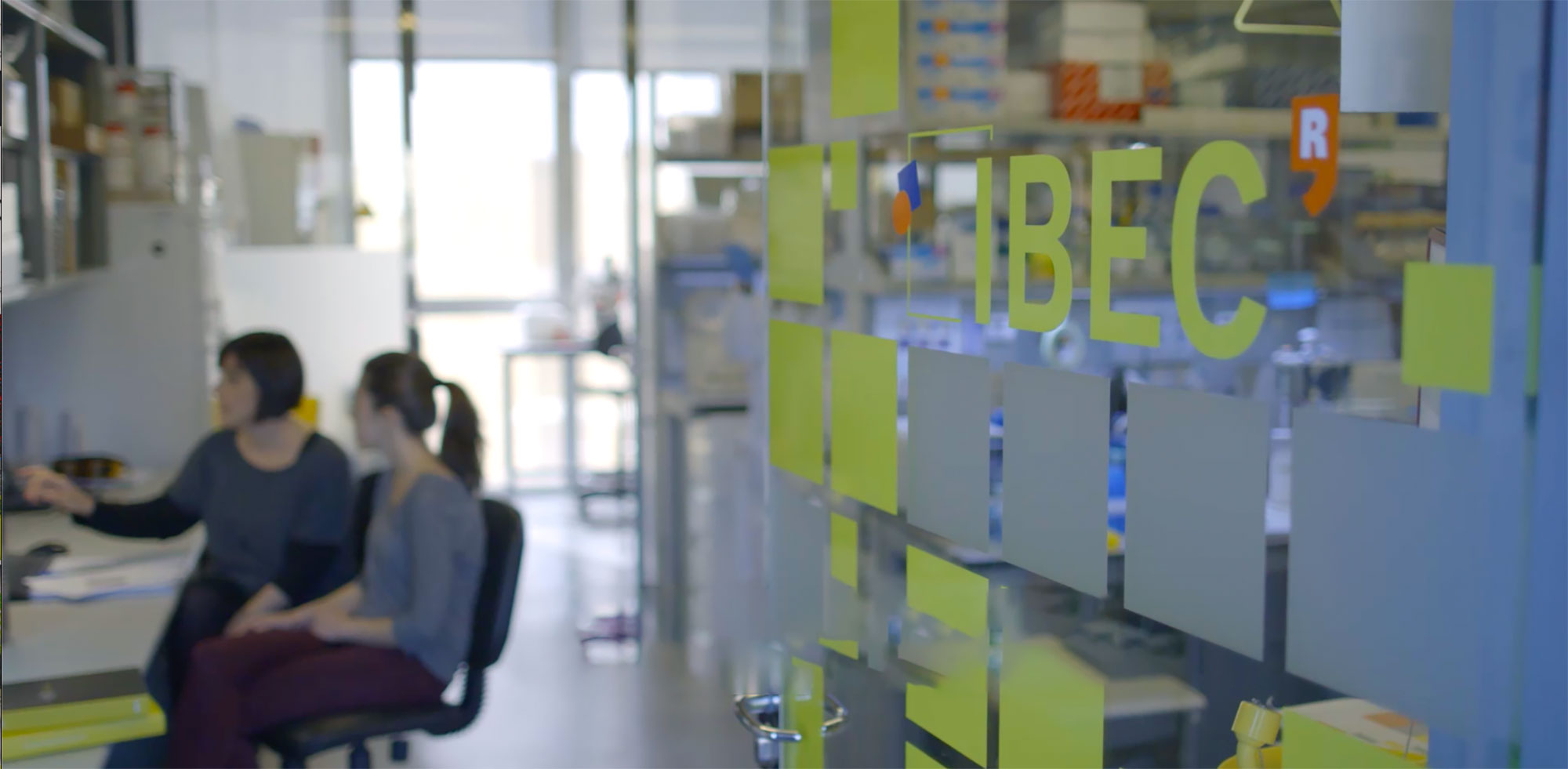Samuel Ojosnegros Martos
Head of Bioengineering in Reproductive Health
+34 934039775
sojosnegros

ibecbarcelona.eu
Staff member publications
 Godeau, Amelie Luise, Seriola, Anna, Tchaicheeyan, Oren, Casals, Marc, Denkova, Denitza, Aroca, Ester, Massafret, Ot, Parra, Albert, Demestre, Maria, Ferrer-Vaquer, Anna, Goren, Shahar, Veiga, Anna, Sole, Miquel, Boada, Montse, Comelles, Jordi, Martinez, Elena, Colombelli, Julien, Lesman, Ayelet, Ojosnegros, Samuel, (2025). Traction force and mechanosensitivity mediate species-specific implantation patterns in human and mouse embryos Science Advances 11, eadr5199
Godeau, Amelie Luise, Seriola, Anna, Tchaicheeyan, Oren, Casals, Marc, Denkova, Denitza, Aroca, Ester, Massafret, Ot, Parra, Albert, Demestre, Maria, Ferrer-Vaquer, Anna, Goren, Shahar, Veiga, Anna, Sole, Miquel, Boada, Montse, Comelles, Jordi, Martinez, Elena, Colombelli, Julien, Lesman, Ayelet, Ojosnegros, Samuel, (2025). Traction force and mechanosensitivity mediate species-specific implantation patterns in human and mouse embryos Science Advances 11, eadr5199 
The invasion of human embryos in the uterus overcoming the maternal tissue barrier is a crucial step in embryo implantation and subsequent development. Although tissue invasion is fundamentally a mechanical process, most studies have focused on the biochemical and genetic aspects of implantation. Here, we fill the gap by using a deformable ex vivo platform to visualize traction during human embryo implantation. We demonstrate that embryos apply forces remodeling the matrix with species-specific displacement amplitudes and distinct radial patterns: principal displacement directions for mouse embryos, expanding on the surface while human embryos insert in the matrix generating multiple traction foci. Implantation-impaired human embryos showed reduced displacement, as well as mouse embryos with inhibited integrin-mediated force transmission. External mechanical cues induced a mechanosensitive response, human embryos recruited myosin, and directed cell protrusions, while mouse embryos oriented their implantation or body axis toward the external cue. These findings underscore the role of mechanical forces in driving species-specific invasion patterns during embryo implantation.
JTD
 Roncero-Carol, Joan, Olaizola-Munoa, June, Aran, Begona, Cuesta, Marta Miret, Blanco-Cabra, Nuria, Casals, Marc, Rumbo, Mireia, Inarejos, Miquel Sole, Ojosnegros, Samuel, Alsina, Berta, Torrents, Eduard, Irimia, Manuel, Hoijman, Esteban, (2025). Epithelial cells provide immunocompetence to the early embryo for bacterial clearance Cell Host & Microbe 33, 1106-1120
Roncero-Carol, Joan, Olaizola-Munoa, June, Aran, Begona, Cuesta, Marta Miret, Blanco-Cabra, Nuria, Casals, Marc, Rumbo, Mireia, Inarejos, Miquel Sole, Ojosnegros, Samuel, Alsina, Berta, Torrents, Eduard, Irimia, Manuel, Hoijman, Esteban, (2025). Epithelial cells provide immunocompetence to the early embryo for bacterial clearance Cell Host & Microbe 33, 1106-1120 
Early embryos are exposed to environmental perturbations that may influence their development, including bacteria. Despite lacking a proper immune system, the surface epithelium of early embryos (trophectoderm in mammals) can phagocytose defective pluripotent cells. Here, we explore the dynamic interactions between early embryos and bacteria. Quantitative live imaging of infection models developed in zebrafish embryos reveals the efficient phagocytic capability of surface epithelia in detecting, ingesting, and destroying infiltrated E. coli and S. aureus. In vivo single-cell interferences uncover actin-based epithelial zippering protrusions mediating bacterial phagocytosis, safeguarding developmental robustness upon infection. Transcriptomic and inter-scale dynamic analyses of phagocyte-bacteria interactions identify specific features of this epithelial phagocytic program. Notably, live imaging of mouse and human blastocysts supports a conserved role of the trophectoderm in bacterial phagocytosis. This defensive role of the surface epithelium against bacterial infection provides immunocompetence to early embryos, with relevant implications for understanding failures in human embryogenesis.
JTD
Larrañaga, Enara, Marin-Riera, Miquel, Abad-Lázaro, Aina, Bartolomé-Català, David, Otero, Aitor, Fernández-Majada, Vanesa, Batlle, Eduard, Sharpe, James, Ojosnegros, Samuel, Comelles, Jordi, Martinez, Elena, (2025). Long-range organization of intestinal 2D-crypts using exogenous Wnt3a micropatterning Nature Communications 16, 382 
 Parra, Albert, Denkova, Denitza, Burgos-Artizzu, Xavier P, Aroca, Ester, Casals, Marc, Godeau, Amelie, Ares, Miguel, Ferrer-Vaquer, Anna, Massafret, Ot, Oliver-Vila, Irene, Mestres, Enric, Acacio, Monica, Costa-Borges, Nuno, Rebollo, Elena, Chiang, Hsiao Ju, Fraser, Scott E, Cutrale, Francesco, Seriola, Anna, Ojosnegros, Samuel, (2024). METAPHOR: Metabolic evaluation through phasor-based hyperspectral imaging and organelle recognition for mouse blastocysts and oocytes Proceedings Of The National Academy Of Sciences Of The United States Of America 121, e2315043121
Parra, Albert, Denkova, Denitza, Burgos-Artizzu, Xavier P, Aroca, Ester, Casals, Marc, Godeau, Amelie, Ares, Miguel, Ferrer-Vaquer, Anna, Massafret, Ot, Oliver-Vila, Irene, Mestres, Enric, Acacio, Monica, Costa-Borges, Nuno, Rebollo, Elena, Chiang, Hsiao Ju, Fraser, Scott E, Cutrale, Francesco, Seriola, Anna, Ojosnegros, Samuel, (2024). METAPHOR: Metabolic evaluation through phasor-based hyperspectral imaging and organelle recognition for mouse blastocysts and oocytes Proceedings Of The National Academy Of Sciences Of The United States Of America 121, e2315043121 
Only 30% of embryos from in vitro fertilized oocytes successfully implant and develop to term, leading to repeated transfer cycles. To reduce time-to-pregnancy and stress for patients, there is a need for a diagnostic tool to better select embryos and oocytes based on their physiology. The current standard employs brightfield imaging, which provides limited physiological information. Here, we introduce METAPHOR: Metabolic Evaluation through Phasor-based Hyperspectral Imaging and Organelle Recognition. This non-invasive, label-free imaging method combines two-photon illumination and AI to deliver the metabolic profile of embryos and oocytes based on intrinsic autofluorescence signals. We used it to classify i) mouse blastocysts cultured under standard conditions or with depletion of selected metabolites (glucose, pyruvate, lactate); and ii) oocytes from young and old mouse females, or in vitro-aged oocytes. The imaging process was safe for blastocysts and oocytes. The METAPHOR classification of control vs. metabolites-depleted embryos reached an area under the ROC curve (AUC) of 93.7%, compared to 51% achieved for human grading using brightfield imaging. The binary classification of young vs. old/in vitro-aged oocytes and their blastulation prediction using METAPHOR reached an AUC of 96.2% and 82.2%, respectively. Finally, organelle recognition and segmentation based on the flavin adenine dinucleotide signal revealed that quantification of mitochondria size and distribution can be used as a biomarker to classify oocytes and embryos. The performance and safety of the method highlight the accuracy of noninvasive metabolic imaging as a complementary approach to evaluate oocytes and embryos based on their physiology.
JTD Keywords: Ai, Consumption, Culture, Embryo development, Fluorescence, Hyperspectral imagin, Implantation, In vitro fertilization, Infertility, Label-free imaging, Microscopy, Morphokinetics, Oxygen concentrations, Selectio, Time-lapse
Ojosnegros, Samuel, Parra, Albert, Denkova, Denitza, Burgos-Artizzu, Xavier P Paolo, Oliver-Vila, Irene, Costa Borges, Nuno, Mestres, Enric, Acacio, Monica, Seriola, Anna, (2023). ROBUST CLASSIFICATION OF MAMMALIAN EMBRYOS AND OOCYTES BASED ON LABEL-FREE HYPERSPECTRAL IMAGING AND ARTIFICIAL INTELLIGENCE Fertility And Sterility 120, E42-E42 
 Cutrale, Francesco, Rodriguez, Daniel, Hortigüela, Verónica, Chiu, Chi-Li, Otterstrom, Jason, Mieruszynski, Stephen, Seriola, Anna, Larrañaga, Enara, Raya, Angel, Lakadamyali, Melike, Fraser, Scott E., Martinez, Elena, Ojosnegros, Samuel, (2019). Using enhanced number and brightness to measure protein oligomerization dynamics in live cells Nature Protocols 14, 616-638
Cutrale, Francesco, Rodriguez, Daniel, Hortigüela, Verónica, Chiu, Chi-Li, Otterstrom, Jason, Mieruszynski, Stephen, Seriola, Anna, Larrañaga, Enara, Raya, Angel, Lakadamyali, Melike, Fraser, Scott E., Martinez, Elena, Ojosnegros, Samuel, (2019). Using enhanced number and brightness to measure protein oligomerization dynamics in live cells Nature Protocols 14, 616-638 
Protein dimerization and oligomerization are essential to most cellular functions, yet measurement of the size of these oligomers in live cells, especially when their size changes over time and space, remains a challenge. A commonly used approach for studying protein aggregates in cells is number and brightness (N&B), a fluorescence microscopy method that is capable of measuring the apparent average number of molecules and their oligomerization (brightness) in each pixel from a series of fluorescence microscopy images. We have recently expanded this approach in order to allow resampling of the raw data to resolve the statistical weighting of coexisting species within each pixel. This feature makes enhanced N&B (eN&B) optimal for capturing the temporal aspects of protein oligomerization when a distribution of oligomers shifts toward a larger central size over time. In this protocol, we demonstrate the application of eN&B by quantifying receptor clustering dynamics using electron-multiplying charge-coupled device (EMCCD)-based total internal reflection microscopy (TIRF) imaging. TIRF provides a superior signal-to-noise ratio, but we also provide guidelines for implementing eN&B in confocal microscopes. For each time point, eN&B requires the acquisition of 200 frames, and it takes a few seconds up to 2 min to complete a single time point. We provide an eN&B (and standard N&B) MATLAB software package amenable to any standard confocal or TIRF microscope. The software requires a high-RAM computer (64 Gb) to run and includes a photobleaching detrending algorithm, which allows extension of the live imaging for more than an hour.
JTD
![]() Godeau, Amelie Luise, Seriola, Anna, Tchaicheeyan, Oren, Casals, Marc, Denkova, Denitza, Aroca, Ester, Massafret, Ot, Parra, Albert, Demestre, Maria, Ferrer-Vaquer, Anna, Goren, Shahar, Veiga, Anna, Sole, Miquel, Boada, Montse, Comelles, Jordi, Martinez, Elena, Colombelli, Julien, Lesman, Ayelet, Ojosnegros, Samuel, (2025). Traction force and mechanosensitivity mediate species-specific implantation patterns in human and mouse embryos Science Advances 11, eadr5199
Godeau, Amelie Luise, Seriola, Anna, Tchaicheeyan, Oren, Casals, Marc, Denkova, Denitza, Aroca, Ester, Massafret, Ot, Parra, Albert, Demestre, Maria, Ferrer-Vaquer, Anna, Goren, Shahar, Veiga, Anna, Sole, Miquel, Boada, Montse, Comelles, Jordi, Martinez, Elena, Colombelli, Julien, Lesman, Ayelet, Ojosnegros, Samuel, (2025). Traction force and mechanosensitivity mediate species-specific implantation patterns in human and mouse embryos Science Advances 11, eadr5199 ![]()
![]() Roncero-Carol, Joan, Olaizola-Munoa, June, Aran, Begona, Cuesta, Marta Miret, Blanco-Cabra, Nuria, Casals, Marc, Rumbo, Mireia, Inarejos, Miquel Sole, Ojosnegros, Samuel, Alsina, Berta, Torrents, Eduard, Irimia, Manuel, Hoijman, Esteban, (2025). Epithelial cells provide immunocompetence to the early embryo for bacterial clearance Cell Host & Microbe 33, 1106-1120
Roncero-Carol, Joan, Olaizola-Munoa, June, Aran, Begona, Cuesta, Marta Miret, Blanco-Cabra, Nuria, Casals, Marc, Rumbo, Mireia, Inarejos, Miquel Sole, Ojosnegros, Samuel, Alsina, Berta, Torrents, Eduard, Irimia, Manuel, Hoijman, Esteban, (2025). Epithelial cells provide immunocompetence to the early embryo for bacterial clearance Cell Host & Microbe 33, 1106-1120 ![]()
![]()
![]() Parra, Albert, Denkova, Denitza, Burgos-Artizzu, Xavier P, Aroca, Ester, Casals, Marc, Godeau, Amelie, Ares, Miguel, Ferrer-Vaquer, Anna, Massafret, Ot, Oliver-Vila, Irene, Mestres, Enric, Acacio, Monica, Costa-Borges, Nuno, Rebollo, Elena, Chiang, Hsiao Ju, Fraser, Scott E, Cutrale, Francesco, Seriola, Anna, Ojosnegros, Samuel, (2024). METAPHOR: Metabolic evaluation through phasor-based hyperspectral imaging and organelle recognition for mouse blastocysts and oocytes Proceedings Of The National Academy Of Sciences Of The United States Of America 121, e2315043121
Parra, Albert, Denkova, Denitza, Burgos-Artizzu, Xavier P, Aroca, Ester, Casals, Marc, Godeau, Amelie, Ares, Miguel, Ferrer-Vaquer, Anna, Massafret, Ot, Oliver-Vila, Irene, Mestres, Enric, Acacio, Monica, Costa-Borges, Nuno, Rebollo, Elena, Chiang, Hsiao Ju, Fraser, Scott E, Cutrale, Francesco, Seriola, Anna, Ojosnegros, Samuel, (2024). METAPHOR: Metabolic evaluation through phasor-based hyperspectral imaging and organelle recognition for mouse blastocysts and oocytes Proceedings Of The National Academy Of Sciences Of The United States Of America 121, e2315043121 ![]()
![]()
![]() Cutrale, Francesco, Rodriguez, Daniel, Hortigüela, Verónica, Chiu, Chi-Li, Otterstrom, Jason, Mieruszynski, Stephen, Seriola, Anna, Larrañaga, Enara, Raya, Angel, Lakadamyali, Melike, Fraser, Scott E., Martinez, Elena, Ojosnegros, Samuel, (2019). Using enhanced number and brightness to measure protein oligomerization dynamics in live cells Nature Protocols 14, 616-638
Cutrale, Francesco, Rodriguez, Daniel, Hortigüela, Verónica, Chiu, Chi-Li, Otterstrom, Jason, Mieruszynski, Stephen, Seriola, Anna, Larrañaga, Enara, Raya, Angel, Lakadamyali, Melike, Fraser, Scott E., Martinez, Elena, Ojosnegros, Samuel, (2019). Using enhanced number and brightness to measure protein oligomerization dynamics in live cells Nature Protocols 14, 616-638 ![]()


 ibecbarcelona.eu
ibecbarcelona.eu